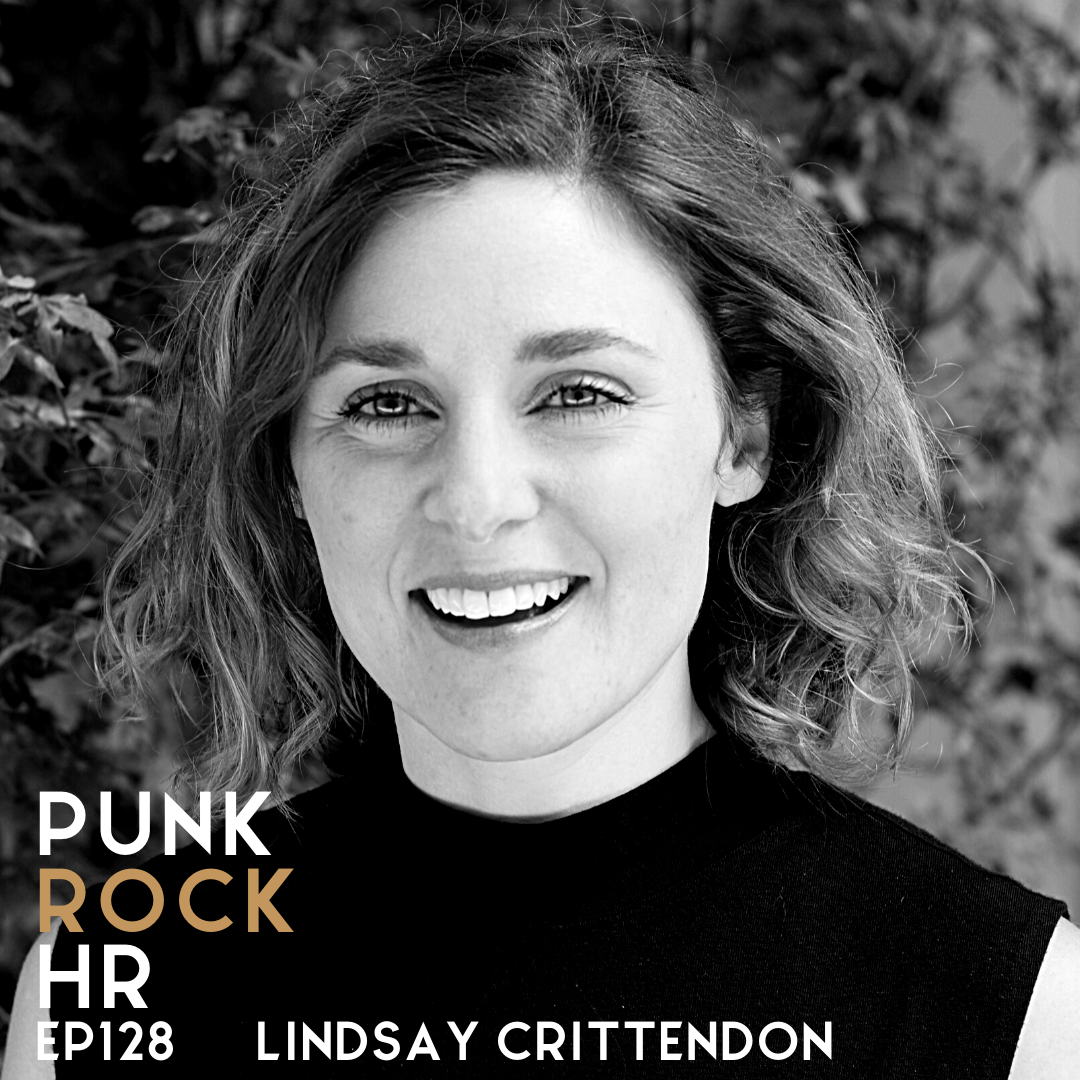
Punk Rock HR Episode 128:
Lindsay Crittendon is the head of Headspace for Work. If you thought that was a meditation app on your phone, so did I. However, it is actually so much more than that. They work with businesses across the spectrum to help them identify the best ways to improve the workplace.
Mental Health Awareness Day is coming up on October 5th. Honestly, it should be every day. We need to be having consistent conversations on this topic and on the effect work can have on our mental health. Today, Lindsay helps bring this to the forefront. She’s dedicated to making the world and the world of work a little bit better.
In this episode, we’re talking about the benefits of mindfulness and more thoughtful behavior on the work environment and on our individual lives when we’re not working. We also talk about COVID-19. We use this opportunity to talk about how to emerge from this pandemic in a healthier way. If you’re interested in a conversation about well-being at work and fixing work, sit back and enjoy this discussion with Lindsay from Headspace for Work.
In this episode you’ll hear:
- Lindsay’s driving purpose behind what she does.
- The vision of Headspace for Work and what they do to make it a reality.
- How Headspace for Work defines mindfulness.
- The challenges that are affecting workplace mental health and what to do with that information.
- What a holistic mental health benefits program would look like in the workplace.
- How mindfulness at work and Headspace for Work specifically can benefit people.
- How to incorporate mindfulness into your workday, even if it’s not recognized as a priority by your employers.
- How businesses and leaders can remove some of the barriers and lessen the stigma attached to mental health.
KEY TAKEAWAYS
WHAT IS THE VISION OF HEADSPACE FOR WORK AND WHAT DO THEY DO TO MAKE IT A REALITY?
The mission of Headspace is to make the world a healthier and happier place. They do that primarily through the design and development of scientifically-backed mindfulness content. They put this content into the world via a mobile app. They also have a lot of original content channels on YouTube and various other places. Specifically, their mission is to manifest the headspace promise within the workplace. This entails stepping back for a little bit and partnering with the companies they work with to bring credible expertise to the organization.
HOW DOES HEADSPACE FOR WORK DEFINE MINDFULNESS?
They define mindfulness by a single word: intentionality. It means being intentional about every area of life, including things like workouts and meditation. There is a lot of science behind meditation and scientific evidence that proves it can reduce mental health problems, which is why they emphasize that practice so heavily.
WHAT ARE THE CHALLENGES THAT ARE AFFECTING WORKPLACE MENTAL HEALTH? WHAT SHOULD I DO WITH THAT INFORMATION?
There is a meaningful company impact on ignoring and or not addressing stress in the workplace. A million people actually miss work every day due to stress. Globally, there are a trillion dollars in lost productivity annually due to stress, anxiety, and depression, as 30% of workers suffer from anxiety and depression. The real opportunity to help here is to first recognize that there are not a lot of programs that address stress. So, if you have the ability to address stress inside of your workplace, a focus on that by the senior leaders and day-to-day managers can meaningfully improve your business performance.
HOW CAN I INCORPORATE MINDFULNESS INTO MY WORKDAY, EVEN IF ITS NOT RECOGNIZED AS A PRIORITY BY MY EMPLOYERS?
Firstly, recognize that you have a relationship with your mental health and with your brain, just like all of the other relationships in your life. Realizing that you can build that relationship every day is a powerful reframing tool. Additionally, inside the Headspace for Work app, there are mini-meditations. Taking a little bit of time each day to be mindful really counts, so take three minutes over your lunch break. Additionally, if you are commuting to work every day, you can listen to a lot of different content in the app. There are also 15-minute workouts that don’t make you sweat but just get your body moving.
HOW CAN BUSINESSES AND LEADERS REMOVE SOME OF THE BARRIERS AND LESSEN THE STIGMA ATTACHED TO MENTAL HEALTH?
Zoom out a little bit to see the components of your life and lifestyle that can improve your mental health. For example, if you are struggling with anxiety or depression, sleep can be a big part of that. It’s much easier to say you’re not sleeping well than to say you have anxiety. Leaders should think about this as simply onboarding into a mindfulness solution.
Resources from this episode:
2020 Mental Health Trends Report
Headspace has special programming planned for World Mental Health Awareness Day and will launch an exciting new initiative around Employee Mental Health.
Follow them on LinkedIn and stay tuned to be the first to find out about upcoming announcements!